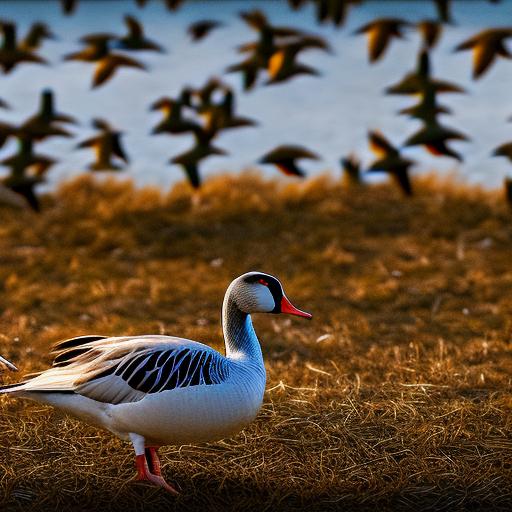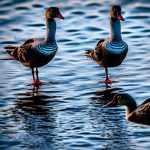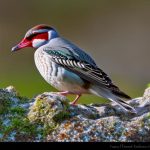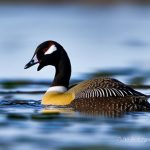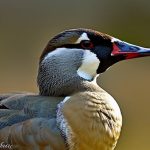Geese can be a beautiful sight to behold, gracefully gliding across a pond or field. However, when they invade school grounds, they can become a nuisance and cause a variety of problems. At our local school, the presence of geese had become a major issue. They were leaving droppings all over the walkways and fields, creating a health hazard for students and staff. Additionally, the geese were damaging the landscaping and causing erosion around the pond. Something needed to be done to address this problem.
After much consideration and research, the idea of creating decoys to deter the geese was proposed. Decoys are life-sized replicas of geese that are strategically placed around an area to trick real geese into thinking it is not safe to land or settle there. This seemed like a promising solution that would not only address the immediate problem but also have long-term benefits for the school community and environment.
Key Takeaways
- Geese were causing problems at a school
- Decoys were created to solve the issue
- Research and design were important in creating effective decoys
- Materials used included foam and paint
- Decoys were placed around the school grounds to keep geese away
The idea of creating decoys to solve the issue
Decoys were chosen as a solution for several reasons. Firstly, they are a non-lethal method of deterring geese, which aligns with the school’s commitment to animal welfare. Secondly, decoys are cost-effective compared to other methods such as hiring professional bird control services or installing physical barriers. Lastly, decoys can be easily moved and adjusted as needed, providing flexibility in addressing changing patterns of goose behavior.
Using decoys also has several benefits over other methods. For instance, using loud noises or scare devices may temporarily scare away geese but they often become habituated to these stimuli over time. Decoys, on the other hand, provide a visual deterrent that remains consistent and does not lose its effectiveness over time. Additionally, decoys do not harm the geese or disrupt their natural behavior patterns, allowing them to find alternative habitats without being harmed.
Researching and designing the decoys
Before creating the decoys, extensive research was conducted to understand the behavior and preferences of geese. This research involved studying their nesting habits, feeding patterns, and preferred habitats. It was discovered that geese are highly territorial and tend to avoid areas where they perceive a threat or competition for resources.
Based on this research, several designs for the decoys were considered. The goal was to create decoys that closely resembled real geese in order to maximize their effectiveness. Different poses, sizes, and colors were tested to determine which design would be most convincing to the geese. Ultimately, a design that closely resembled a resting goose with its head slightly raised was chosen as it appeared to be the most effective in deterring geese.
Materials used to make the decoys
To create the decoys, a variety of materials were used. The bodies of the decoys were made from lightweight but durable plastic that could withstand outdoor conditions. The heads were made from a combination of foam and resin to give them a realistic appearance. The eyes were carefully painted to mimic the look of real geese.
These materials were chosen for their durability and ability to withstand various weather conditions. It was important that the decoys could withstand rain, wind, and sunlight without deteriorating or losing their effectiveness. Additionally, the materials needed to be lightweight so that the decoys could be easily moved and adjusted as needed.
The process of making the decoys
Creating the decoys was a meticulous process that required attention to detail. The first step was to create a mold for the body of the decoy using a 3D printer. Once the mold was created, it was filled with the lightweight plastic material and left to dry. The heads were then sculpted using foam and resin, carefully shaped to resemble real geese.
After the bodies and heads were complete, they were carefully painted to mimic the colors and patterns of real geese. The eyes were painted with precision to give the decoys a lifelike appearance. Finally, the bodies and heads were attached, and the decoys were ready for placement around the school grounds.
During the process of making the decoys, several challenges were faced. One of the main challenges was ensuring that the decoys looked realistic enough to fool the geese. This required careful attention to detail and multiple iterations of the design. Additionally, finding the right materials that were both durable and lightweight proved to be a challenge. However, with perseverance and experimentation, these challenges were overcome.
Placing the decoys around the school grounds
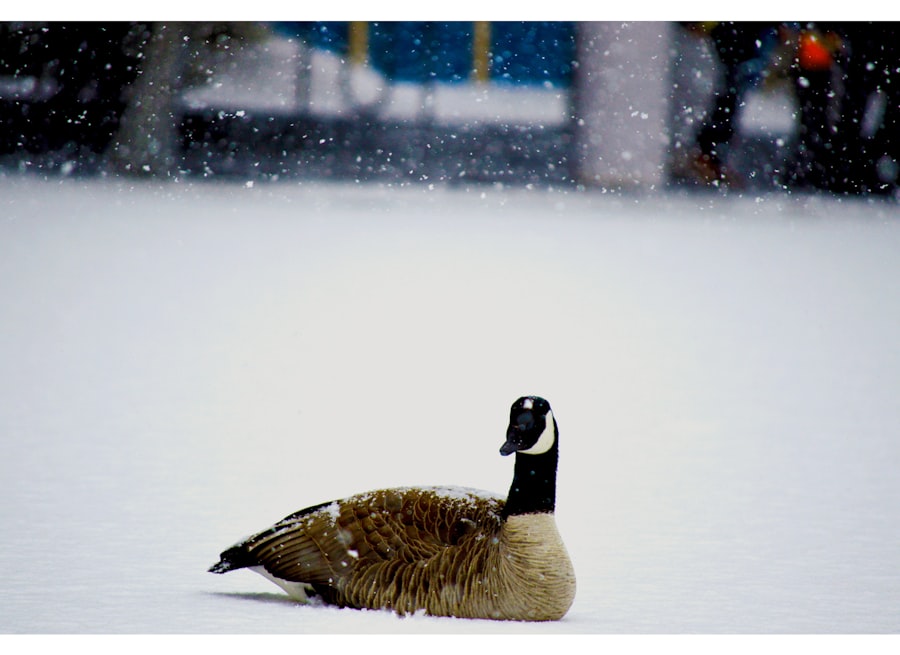
The decoys were strategically placed around the school grounds to create a visual deterrent for the geese. They were positioned near areas where the geese had been causing the most problems, such as walkways and fields. Additionally, they were placed near the pond to discourage geese from settling there and causing further damage to the landscaping.
The placement of the decoys was carefully considered based on the behavior patterns of geese. For example, geese tend to avoid areas where they perceive a threat from predators or other geese. Therefore, the decoys were placed in groups to create the illusion of a larger flock, which would deter geese from landing or settling in those areas.
The effectiveness of the decoys in keeping geese away
Since the placement of the decoys, there has been a noticeable decrease in the number of geese on school grounds. The decoys have proven to be highly effective in deterring geese from landing or settling in areas where they are placed. This has resulted in cleaner walkways and fields, reducing health hazards for students and staff.
Observations have shown that when geese approach an area with decoys, they often change their flight path or land elsewhere. The presence of the decoys creates a visual deterrent that signals to the geese that the area is not safe or suitable for nesting or feeding. This has significantly reduced the damage caused by geese to the landscaping and pond.
Maintenance of the decoys over time
To ensure the continued effectiveness of the decoys, regular maintenance is required. This includes cleaning the decoys to remove dirt and debris, as well as periodically repositioning them to prevent geese from becoming habituated to their presence. Additionally, any damaged or worn-out parts of the decoys are repaired or replaced as needed.
While overall maintenance has been relatively straightforward, there have been some challenges that have arisen. For instance, extreme weather conditions such as strong winds or heavy rain can cause damage to the decoys. Therefore, it is important to regularly inspect and repair any damage to ensure their continued effectiveness.
Positive impact on the school community and environment
The presence of the decoys has had a positive impact on both the school community and the environment. Firstly, the reduction in geese has resulted in cleaner walkways and fields, creating a safer and more pleasant environment for students and staff. The health hazards associated with goose droppings have been significantly reduced, improving overall hygiene at the school.
Secondly, the decoys have had a positive impact on the environment by reducing damage to the landscaping and pond. Geese can cause erosion around ponds by trampling vegetation and disturbing soil. By deterring geese from settling near the pond, the decoys have helped preserve its natural ecosystem and prevent further erosion.
Lessons learned and future plans for the decoys
The creation and use of decoys to deter geese at our local school has been a valuable learning experience. It has demonstrated that non-lethal methods can be effective in addressing wildlife-related issues while also promoting animal welfare. The research and design process highlighted the importance of understanding the behavior and preferences of the target species in order to create an effective deterrent.
In the future, there are plans to expand the use of decoys to other areas of the school grounds where geese continue to be a problem. Additionally, there is potential for similar projects to be implemented in other schools or public spaces facing similar issues with geese or other wildlife. The success of this project has shown that simple and cost-effective solutions can have a significant impact on improving the quality of life for both humans and animals.
If you’re interested in innovative ways to manage wildlife on school grounds, you’ll want to check out this fascinating article on how a school created decoys to keep geese away. Geese can often become a nuisance, leaving behind droppings and causing damage to the property. This article from Poultry Wizard provides valuable insights into the techniques used by the school to deter geese effectively. Discover how they utilized decoys as a natural and humane solution. To learn more about this ingenious approach, click here.
FAQs
What is the article about?
The article is about a school that made decoys to keep geese away.
Why did the school make decoys?
The school made decoys to keep geese away from their campus.
Why were geese a problem for the school?
Geese were a problem for the school because they would leave droppings on the campus and damage the grass.
How did the school make the decoys?
The school made the decoys by using cardboard boxes and painting them to look like geese.
Did the decoys work?
Yes, the decoys worked and helped to keep the geese away from the school’s campus.
What other methods are used to keep geese away?
Other methods used to keep geese away include using noise makers, applying repellents, and using trained dogs to chase them away.
Are there any negative effects of using decoys to keep geese away?
There are no known negative effects of using decoys to keep geese away.
Meet Walter, the feathered-friend fanatic of Florida! Nestled in the sunshine state, Walter struts through life with his feathered companions, clucking his way to happiness. With a coop that’s fancier than a five-star hotel, he’s the Don Juan of the chicken world. When he’s not teaching his hens to do the cha-cha, you’ll find him in a heated debate with his prized rooster, Sir Clucks-a-Lot. Walter’s poultry passion is no yolk; he’s the sunny-side-up guy you never knew you needed in your flock of friends!

